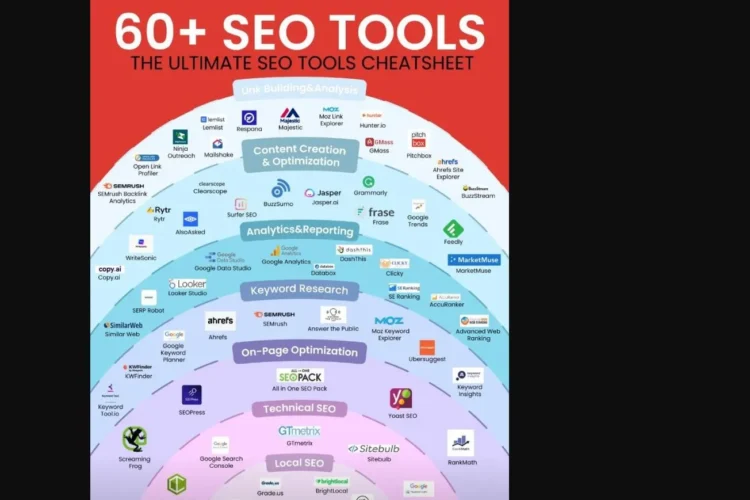
Launching a Website Isn’t Enough
YYou need solid SEO groundwork to rank higher, drive traffic, and build authority. Here’s a 2025-ready SEO checklist to set your website up for long-term success.Your Checklist to Start SEO
- Set up Google Search Console
- Set up Bing Webmaster Tools
- Set up Google Analytics
- Connect Google Analytics
- Connect Google Search Console
- Generate an XML sitemap
- Submit a sitemap
- Create a robots.txt file
- Check Search Console for manual actions
- Make sure that Google can actually index your website
Your Checklist for Advanced SEO
- Make sure the site is on HTTPS
- Duplicate versions of site in Google’s Index
- Find crawl errors
- Explore the cause of excluded URLs
- Improve site speed
- Fix broken internal links
- Fix broken outbound links
- Find and fix HTTP links on HTTPS pages
- Make sure your website is mobile-friendly
- Check SEO-friendly URL structure
- Make sure data is structured
- Check the page depth of site—3 clicks deep
- Check temporary 302 redirects
- Find and fix redirect chains and loops
Your Checklist for WordPress SEO
- Choose a reliable hosting provider
- Install an SEO-friendly WordPress theme
- Install a free WordPress SEO plugin
- Set your preferred domain
- Check your site’s visibility settings
- Enable SEO-friendly permalinks
- Verify your site with Google Search Console and submit your XML sitemap
- Carry out keyword research
- Install the SEO Writing Assistant by Semrush plugin and create great content
- Optimize images
- Set custom URLs for pages and posts
- Use optimized page headings
- Craft unique optimized title tags & meta descriptions
- Use internal linking
- Use optimized file names for images
- Add alt text to images
- Install a cache plugin to improve site speed
- Noindex tag pages and other low-value content
- Mark up your pages with schema
- Use ‘Last Updated’ dates
Your Checklist for On-Page SEO
- Find and fix duplicate, missing and truncated title tags
- Find and fix duplicate and missing meta descriptions
- Find and fix multiple H1 tags
- Improve title tags, meta tags and page content
- Improve browser tag
- Ensure images use ALT tags
- Improve title tag on the Search Engine Results Page (SERP)
- Improve title tag on external websites
- Run a content audit and prune content
- Improve internal linking
- Find and fix orphaned site pages
- Update your site’s content
Your Checklist for Off-Page SEO
- Analyze your competitor’s link profile
- Conduct a link intersect analysis
- Turn unlinked mentions into links
- Find new link-building opportunities
- Set up and optimize Google Business Profile (Google My Business)
- Claim a Google Maps listing
- Claim a Google Business Profile (Google My Business)
- Check the quality of your link building through the authority score
- Check the quality of your link building through the number of unique domains
- Check the quality of your link building through the topical relevance
- Check the quality of your brand building through brand searches
- Check the quality of your content marketing
- Check the quality of your PR
- Check all citations of your business
1. Pre-Launch SEO Setup
Before your site goes live, ensure these essentials are in place:
- Domain Name: Short, memorable, and keyword-relevant.
- Hosting: Choose a reliable provider for speed and uptime.
- SSL Certificate: Secure your site with HTTPS for better rankings.
- Mobile Responsiveness: Design must work seamlessly on all devices.
- Robots.txt File: Guide search engine crawlers effectively.
- XML Sitemap: Create and submit it to Google Search Console and Bing Webmaster Tools.
2. Keyword Research: Lay the Foundation
- Primary Keywords: Use tools like Google Keyword Planner to target high-volume, low-competition keywords ratio.
- Long-Tail Keywords: Focus on phrases with better conversion potential.
- Competitor Analysis: Study top-performing competitor keywords and find gaps.
3. On-Page SEO: Optimize Every Page
- Title Tags: Use primary keywords; stay under 60 characters.
- Meta Descriptions: Write compelling descriptions (150-160 characters).
- Header Tags: Structure content with H1, H2, and H3 tags, incorporating keywords naturally.
- URL Structure: Short, descriptive, and keyword-rich.
- Image Optimization: Compress images and add keyword-rich alt text.
- Internal Linking: Connect pages strategically to guide users and improve crawlability.
4. Technical SEO: Get Your Backend Right
- Page Speed: Use tools like Google PageSpeed Insights to optimize loading times.
- Mobile-First Indexing: Test usability with Google’s Mobile-Friendly Test tool.
- Schema Markup: Add structured data for enhanced search features.
- Canonical Tags: Prevent duplicate content issues.
5. Build a Strong Content Strategy
- High-Quality Content: Create informative, engaging, and unique content.
- E-A-T Principles: Build Expertise, Authority, and Trustworthiness.
- Blog and Resources: Regularly publish fresh, value-driven content.
- Content-Length: Write in-depth articles (1000+ words) that thoroughly cover topics.
- User Intent: Align content with what your audience is searching for.
6. Off-Page SEO: Build Authority
- Link Building: Secure high-quality backlinks through guest posts, PR, and outreach.
- Social Media Signals: Promote your content across platforms for engagement.
- Brand Mentions: Monitor and convert unlinked mentions into backlinks.
7. Local SEO (If Applicable)
- Google Business Profile: Optimize with accurate, consistent details.
- Local Citations: List your business on directories; ensure NAP consistency.
- Reviews: Encourage positive customer feedback on Google and other platforms.
8. Analytics and Monitoring: Track Your Progress
- Google Analytics: Monitor traffic, user behavior, and conversions.
- Search Console: Check indexing, performance, and search queries.
- Regular Audits: Identify and fix SEO issues monthly.
9. Post-Launch Optimization
- Monitor Indexing: Ensure critical pages are indexed.
- Check Broken Links: Use tools like Screaming Frog to fix broken links.
- Content Updates: Refresh articles to keep them relevant and competitive.
10. Stay Ahead with Updates
- Follow Google’s algorithm changes.
- Join SEO communities to stay informed about industry trends.
- Adapt your strategies to keep your website competitive.
Set Your Website Up for Success
By following this SEO checklist, you’ll create a strong foundation for visibility, traffic, and growth. Remember: SEO isn’t a one-time task—it’s an ongoing commitment.
Are you ready to dominate 2025 search rankings?
I’m Prav Yadav, the Founder of DML Training

Our Clients Achieve Such Results Within the First 6 Months of Engagement Want Such Results for Your Business? DM Me Right Away.



